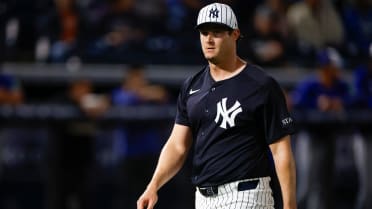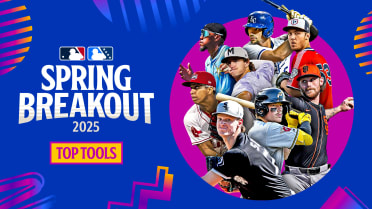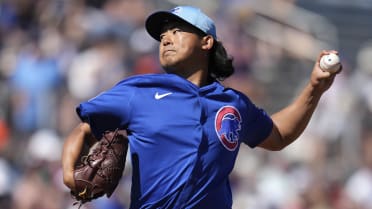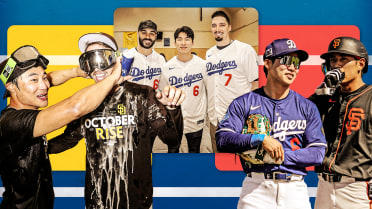MLB unveils 'ambitious' Mexican academy
Inaugural class of 45 prospects includes brother of Dodgers' phenom Urias
CULIACAN, Mexico -- The big league dream for young Carlitos Urias doesn't stop when he wakes up each morning.
There are the usual early-morning chats with his father, Carlos, a catcher during his younger days, over breakfast. Big brother Julio, the young pitching phenom for Dodgers and the city's newest superstar, often chimes in with a few baseball tips before he walks out the door for his morning workouts and Carlitos leaves for school.
Urias, 14, is one of 45 prospects in the inaugural class of Major League Baseball's new academy in the Tres Rios sector of the city. Centered on the grounds of La Academia y el Museo Interactivo del Beisbol de Sinaloa, MLB's academy began operating in early January for players ages 13-17 as part of a partnership with the Sinaloan state government.
"This is a great opportunity for players like me," Urias said in Spanish. "It's very unique, the only one in the country, and we are happy to be here. We just have to keep working hard."
• Complete Caribbean Series coverage
The partnership between MLB and the state government can be traced back to September 2015, when Commissioner Rob Manfred was in Culiacan for the grand opening of Estadio Tomateros, the site of this week's Caribbean Series, and began discussions about a possible alliance. MLB is also opening an office in Mexico City.
"The academy is important to us because it combines two of the Commissioner's most important objectives, and that's growth on the international level and youth participation," said Joel Araujo, MLB's senior manager of international baseball operations. "Our goal with this academy, as with any development academy that we have done in the past and are currently operating, is to provide opportunity for players and young kids to develop their baseball skills and help them become professional men and good citizens."
There were nine players born in Mexico on Opening Day rosters last year, a list that includes Colorado's Jorge De La Rosa, Toronto's Marco Estrada and Roberto Osuna, Washington's Oliver Perez, then-Cardinals starter Jaime Garcia, former Orioles Yovani Gallardo and Miguel Gonzalez, then-Angels reliever Noel Salas and Kansas City's Joakim Soria.
Overall, there have been more than 120 players born in Mexico play in the Major Leagues and more could be on the way.
"Mexico has a strong infrastructure and a long baseball history," Araujo said. "We hope that this academy can be another part and add to the rich history of baseball in Mexico and help these kids develop and hopefully become Major League Baseball Players one day."
MLB's academy in Mexico features two full fields and three half-fields. Prospects train after school during the week and for 3 1/2 hours on Saturday morning in a regimen that includes hitting, throwing and running programs. MLB runs similar programs in Nicaragua and Brazil.
Russell Vazquez, a former pitching coach in the Seattle organization, serves as the academy's field coordinator. The staff also includes pitching coaches Rick Knapp, a former big league pitching coach for the Tigers, along with former Mexican League pitchers Marco Mendoza and Victor Alvarez. Former Mariners coach Bruce Hines handles the infield coaching duties with former Mexican League infielder Heriberto Salas, and former Mexican League player Ramon Valdez coaches the outfield. Former Mexican League player Kelvi Gomez handles the catchers.
Charlie Gastelum of MLB's Scouting Bureau serves as the academy's primary scout.
"This gives an opportunity for the kids to develop and show the scouts that come here every day to see their talents," Vazquez said. "The goal is to develop as many possible players to be in the big leagues from Mexico. This is a big country with a lot of baseball players, and we want to get more big leaguers from Mexico."
Of the 45 players in the inaugural class, 38 are from Sinaloa. The states of Puebla and Chihuahua have two players each, while the states of Jalisco, Sonora and Veracruz are each represented by one player.
There are five outfielders, 16 infielders, six catchers and 16 pitchers in the inaugural class.
"This is the first time we have a full-fledged academy, a beautiful facility that the government built, and we hope that it's going to be as successful as the other development programs that we are running," Araujo said. "This one in Mexico is one our most ambitious projects to date. We have a very professional coaching staff that's committed to the program's success."
Jesse Sanchez, who has been writing for MLB.com since 2001, is a national reporter based in Phoenix. Follow him on Twitter @JesseSanchezMLB and Facebook.



